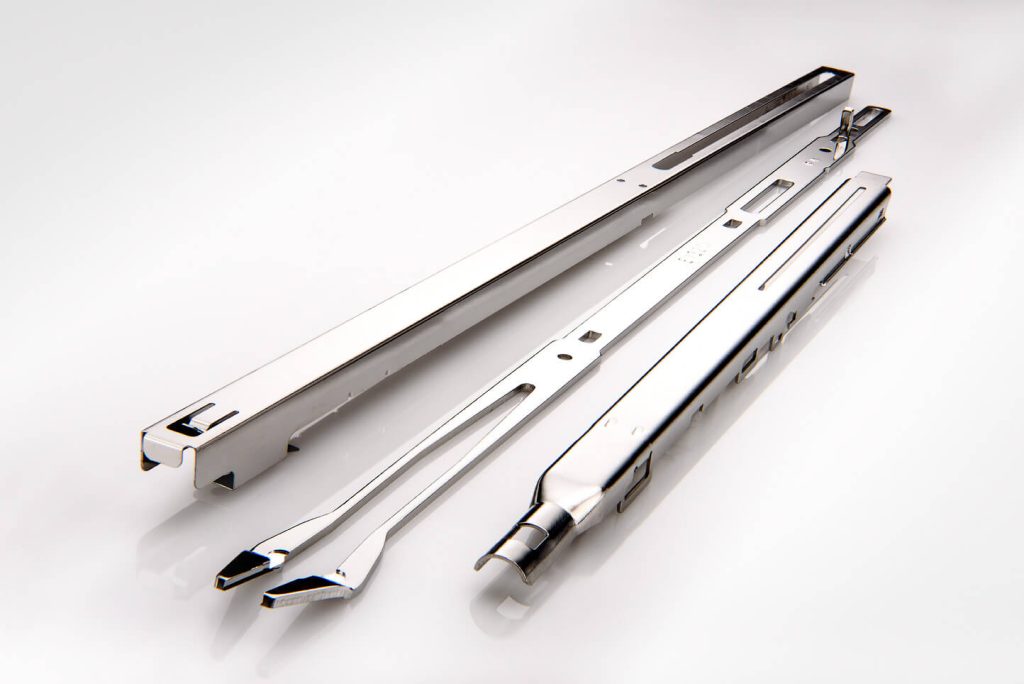In this post, we’ll look at the specific challenges coastal and marine environments present, how citric acid passivation mitigates these issues, and where this treatment is being used to enhance durability in real-world applications.
Unique Challenges Posed by Coastal and Marine Environments
The elements that make coastal and marine environments visually stunning—saltwater, salty air, and high humidity—are also those that accelerate corrosion in metals. Stainless steel, while inherently corrosion-resistant, can still degrade over time in these environments due to:
- Saltwater Exposure
Salt in seawater is highly corrosive and can quickly penetrate and damage the surface of untreated metals, leading to pitting and localized corrosion. This corrosion is especially prevalent in metal structures submerged in seawater, such as docks, marine equipment, and offshore platforms.
- High Humidity
Constant exposure to high humidity increases the likelihood of condensation forming on metal surfaces, particularly in warm, coastal climates. This trapped moisture speeds up oxidation, which can weaken even stainless steel over time.
- Weathering and UV Exposure
Coastal and marine environments are also subject to intense UV exposure and seasonal storms. These elements, combined with salt and moisture, create an environment where metals must be exceptionally resilient to retain their integrity.
- Frequent Cleaning and Maintenance Needs
Due to these factors, structures and equipment in coastal environments often require rigorous maintenance, including regular cleaning and protective treatments. Stainless steel used in these settings needs to withstand frequent washing and cleaning without corroding.
How Citric Acid Passivation Enhances Durability and Corrosion Resistance
Citric acid passivation is a surface treatment that enhances stainless steel’s resistance to the aggressive conditions found in coastal and marine environments. The process works by removing free iron and surface contaminants from the steel, which helps form a stable, passive oxide layer that shields against corrosion. Here’s how it helps in these specific conditions:
- Enhanced Corrosion Resistance
Citric acid passivation creates a protective layer that’s more resistant to pitting and crevice corrosion, both of which are common in salty, humid environments. By removing impurities and forming a robust oxide layer, this process reduces the steel’s susceptibility to saltwater’s corrosive effects, helping it stay resilient for longer periods.
- Eco-Friendly and Worker-Safe Solution
Unlike nitric acid passivation, citric acid is non-toxic and environmentally friendly, making it ideal for use in marine environments where chemical runoff could harm surrounding ecosystems. It’s also safer for personnel working on offshore or coastal structures, as it doesn’t produce harmful fumes.
- Compatibility with Frequent Maintenance
The stable oxide layer created by citric acid passivation holds up well to regular cleaning and maintenance routines. Whether the steel is part of a dock, a boat, or a coastal structure, this layer remains intact even with repeated washing, further protecting the metal and reducing long-term maintenance costs.
- Reduced Contaminant Buildup
Because citric acid passivation removes free iron and other contaminants, the treated surface is less likely to harbor deposits that could lead to corrosion. This is especially beneficial in coastal areas where salt, sand, and other debris frequently come into contact with the metal.
Examples of Citric Acid Passivation in Marine-Grade Equipment and Coastal Infrastructure
Citric acid passivation has gained popularity across various marine and coastal applications due to its proven durability and eco-friendliness. Here are some key examples:
- Offshore Platforms and Oil Rigs
Stainless steel used in offshore platforms undergoes rigorous testing and treatment to withstand years of exposure to saltwater and high humidity. Citric acid passivation has become a go-to method for ensuring that these structures remain corrosion-resistant and structurally sound, even in harsh, remote environments.
- Boats and Marine Vessels
Components such as railings, fasteners, and even hull materials in boats and marine vessels are treated with citric acid passivation to enhance their corrosion resistance. This treatment allows vessels to endure long periods at sea without deteriorating from saltwater exposure, reducing repair and replacement costs.
- Coastal Construction and Infrastructure
Bridges, railings, and walkways along coastlines are often constructed from stainless steel for its strength and resilience. Citric acid passivation helps these structures maintain their integrity and appearance despite constant exposure to salt air, wind, and humidity, enabling them to withstand the elements with minimal corrosion.
- Water Treatment Plants
Coastal water treatment facilities use stainless steel extensively in their systems, which are exposed to both freshwater and seawater. Citric acid passivation is frequently applied to these systems, ensuring that tanks, pipes, and valves remain corrosion-resistant and sanitary despite fluctuating environmental conditions.
Conclusion: The Future of Citric Acid Passivation in Coastal and Marine Applications
Citric acid passivation is a valuable process for enhancing the durability and performance of stainless steel in coastal and marine environments. By forming a corrosion-resistant oxide layer, it helps protect against saltwater, humidity, and harsh weather, extending the lifespan of structures and equipment in some of the world’s most challenging conditions. As industries continue to prioritize eco-friendly practices, citric acid passivation is likely to become an even more popular choice, providing an effective and sustainable solution for long-lasting stainless steel.
For manufacturers and operators in marine and coastal industries, citric acid passivation offers peace of mind by minimizing corrosion risks, reducing maintenance costs, and aligning with environmental standards. In an era where sustainability and durability go hand-in-hand, citric acid passivation stands out as an essential tool for ensuring stainless steel’s reliability in demanding environments.










